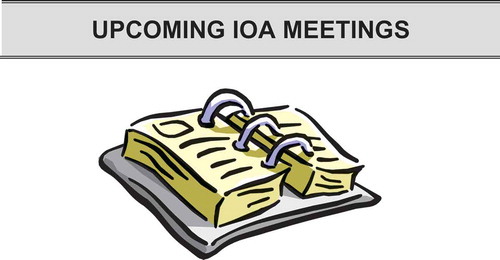Ozone professionals had two unique opportunities in late summer to learn about the latest in ozone technology at International Ozone Association regional conferences in Las Vegas, NV, USA and Lausanne, Switzerland.
The first conference in Las Vegas was held on August 20–23, 2018 and sponsored by the IOA Pan American Group.
Water reuse remains a hot topic in ozone. Rick Warner, 2016–2017 President of the Water Environment Federation in his keynote address to the conference reviewed a number of active water reuse projects including El Segundo, CA; Hampton Roads, VA; Orange County, CA; Clark County, NV and Reno, NV. A successful water reuse project is a combination of a strong technical approach along with an understanding of the social, economic and environmental elements. In his project at Reno, a combination of ozone plus biological activated carbon (BAC) appears to be an optimum approach for reuse projects and a good alternative to reverse osmosis.
An active reuse project is underway at San Diego, CA. A demonstration plant has been operating since 2014 using ozone and BAC. The goal is to supply one-third of San Diego’s source water through potable reuse. Results from the trial show that ozone and BAC continues to demonstrate a significant removal of contaminates of emerging concern and total organic carbon.
The conference also addressed the use of ozone as part of a multibarrier approach for the management of algal toxins. Harmful algae blooms are becoming a seasonal problem in many lakes, causing Do Not Drink/Do Not Boil advisories. Further studies are investing the products formed when the cyanobacteria are ozonated.
The second conference was held on September 5–7, 2018 in Lausanne, Switzerland and sponsored by the IOA EA3G Group.
The conference had a heavy emphasis on micropollutants and their inactivation by ozone. Dr Urs von Gunten, Eawag, Swiss Federal Institute for Aquatic Science and Technology, reviewed Switzerland’s approach to enhanced municipal wastewater treatment for micropollutant abatement by ozone. Researchers from Eawag also developed reaction rate constants for virus inactivation in surface water and wastewater and compared them with the constants in pure buffered water.
Several advanced oxidation techniques for removing micropollutants were demonstrated.
Ozone continues to be used in aquaculture and a process using foam fractionation combined with ozone was outlined.
The conferences also reported on the design and operation of several water treatment plants worldwide. Also, a new process for an oxygen recovery system from ozone generators was outlined with results from a demonstration plant.
Conference attendees have full access to the conference proceedings. For more information on how to gain access to these proceedings, contact your regional IOA office. Along with Ozone: Science & Engineering and Ozone News, these conferences are a valuable part of your membership to IOA.
It is very encouraging to see the progress in developing ozone technologies to address today’s urgent environmental needs.
Barry L. Loeb
Editor-in-Chief
2019
August 25–29, 2019. IOA Pan American Group Regional Annual Conference, Buckhead Marriott Hotel, Atlanta, GA. Call for abstracts, due 15 March 2019. Information: www.ioa-pag.org.
October 20–25, 2019, IOA 24th World Congress and Exhibition, Hyatt Palais de la Méditerrané, Nice France. Call for abstracts, due 12 April 2019. Additional information will be available in Ozone News or www.ioa-ea3g.org.
2020
August 17–20, 2020. IOA Pan American Group Regional Annual Conference, South Point Hotel and Casino, Las Vegas, NV. Information: www.ioa-pag.org.



